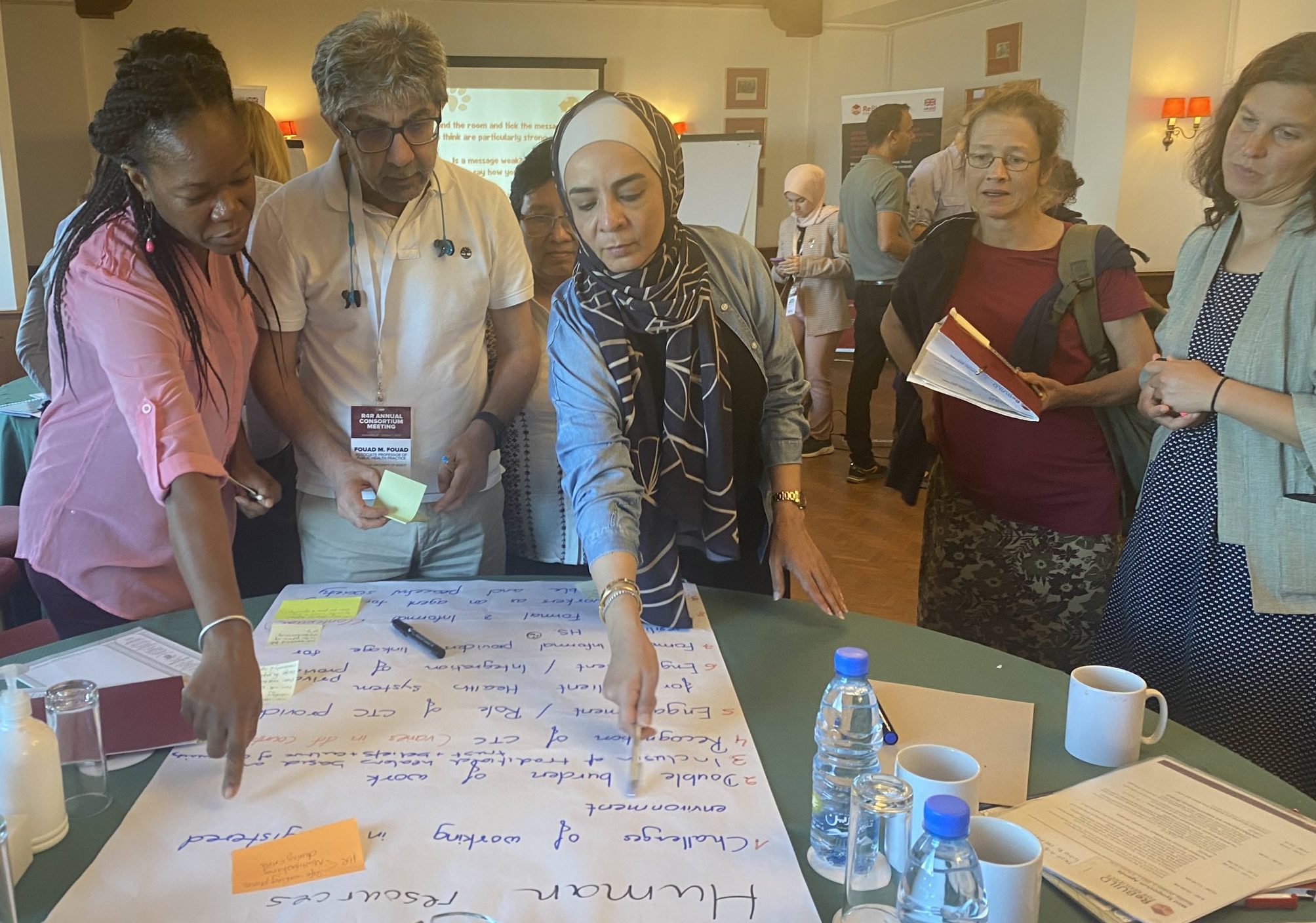
The ReBUILD for Resilience annual meeting
Navigating health system resilience research, some emerging themes from our annual meeting
31 October 2023
In an ever-changing world beset by shocks and crises, health system resilience is a critical consideration in improving access to services and health outcomes. In the recent ReBUILD annual meeting we heard that the interplay of various endogenous and exogenous factors – including gender dynamics, politics, justice, the private sector, power relations and multi-sectoral action – shapes the robustness of healthcare systems. This blog post, by Kate Hawkins of Pamoja Communications Ltd [opens new tab], explores these themes and how they are playing out in particular ways in our work in multiple contexts.
1. A gendered approach
A central theme of our work is the incorporation of gender analysis into health system research. Naturally, our deliberations led to discussions of the barriers to gender mainstreaming and the success that we have had in projects such as our work on close-to-community providers of healthcare. We were also joined by our Advisory Committee member, Val Percival, who provided a key note speech on the recent Lancet Commission on peaceful societies through health equity and gender equality [opens new tab], which she headed. We were particularly struck by her explanation of virtuous circles and vicious cycles and how they may take us nearer or further away from our goals. This year we have conducted a root and branch gender, equity and justice audit of all of our research. Keep your eyes peeled for the results!
2. Justice and its ethical dimensions
Justice is an integral component of health system resilience. It’s important to recognise the interplay between inter-health systems and intersectoral powers in determining pathways to justice. Some of the presentations at our meeting mentioned the challenges of discussing justice in high-conflict areas like Myanmar and Afghanistan. Others talked of the moral discomfort of engaging with the government in settings like Afghanistan where the rights of women are so abused through state policy. Can there be such a thing as health systems resilience under such circumstances and what role do health systems researchers play in these contexts?
3. Methods and voices
Listening to and communicating with communities were emphasised as key strategies in health systems research. Participatory Action Research (PAR) is a tool that particularly lends itself well to issues of health justice. It aims to address disparities and explore their roots, focusing on social determinants of health like poverty, education, and housing. We showed two films from our PAR work with close-to-community providers. In Nepal, the providers themselves developed a film of their work which created space for dialogue and reflection on their priorities and generated new understandings of their capacities and challenges in providing health care services.
We heard that the learning site approach we are using is bringing stakeholders into the evidence generation process such as the strengthening of local governance systems through the Municipal Health Committees in Lebanon. Methods like problem prioritising and root cause analysis were mentioned as tools to navigate power complexities in settings like Sierra Leone. We were also reminded that it is essential to consider how to capture the voices of those who remain outside the purview of the health system, such as those in mental distress, untreated, and in pain.
4. The role of the private sector
The private sector in its various forms plays a significant role in healthcare. In our meeting we heard that the private sector can demonstrate a “chronic fluidity”, shifting across health packages and diverse settings. Understanding how to conceptualise and engage with the private sector, especially in times of conflict and shock, is essential. Recognising the diversity of the private sector – including organisations as different as private hospitals, ethnic health organisations and refugee-run social enterprises – is crucial. The existence of parallel and intertwined health systems, encompassing public and private components, as well as host communities and refugees, was acknowledged and explored in the meeting. Fragmentation is seen both as a challenge and an opportunity, requiring a careful balancing act. Integration can either benefit or harm those involved, highlighting the difficulty in making generalisable statements due to the complexity of context.
5. Power dynamics and shocks
Many of the presentations in the meeting underscored the necessity of navigating power relations within the health system. Political Economy Analysis (PEA) has been used by ReBUILD studies (such as this one) as a tool to understand political processes as potential shocks, such as elections, governance gaps and decentralisation. In presentations from Nepal we acknowledged the potential seasonality of shocks and how they play out over time in different settings. Rather than considering shocks in isolation, many of our settings are experiencing chronic and overlapping shocks, the concept of poly-crises may help us better understand these.
6. Multi-sectoral action
The meeting explored a holistic approach to health system resilience, considering the interconnectedness of various sectors. Many presentations stressed the role of intersectoral and multi-sectoral action in fostering resilience. However, it was acknowledged that governmental policy solutions and governance structures are not necessarily equipped to handle this kind of joined up action.
The themes discussed in our meeting paint a wide-ranging picture of health system resilience. Understanding and addressing these interconnected themes are crucial for building health systems that can withstand shocks and provide equitable, high-quality care to all. As we navigate the complex terrain of health system resilience, we must remain vigilant, adaptable, and committed to improving local and global health outcomes.